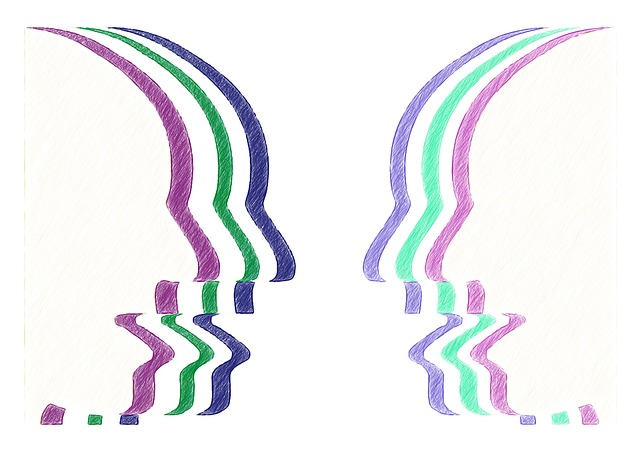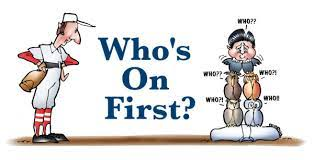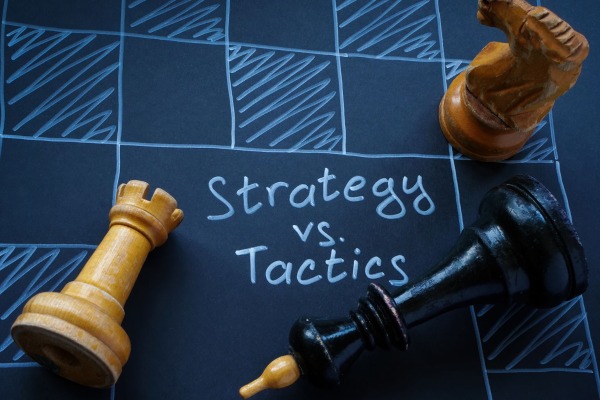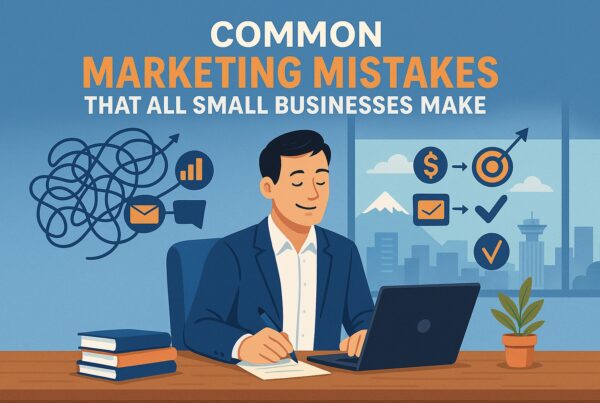What’s the Difference Between a Strategy and a Tactic?

In today’s business world, organizations need to have a plan to reach their goals. But many need to realize that there are two distinct elements involved in this process: strategy and tactics. While these terms are often used interchangeably, fundamental differences should be understood to ensure success and provide an appropriate contingency plan aligned with the various strategic goals and objectives.
The most basic way to distinguish strategy and tactics is to think of a strategy as the overarching plan for achieving the organization’s goals. In contrast, tactics are the specific activities that make up a key part of this strategic plan. As such, it’s important to have both to achieve success.
At its core, strategy is all about setting long-term objectives and figuring out how to reach them. This requires taking into account both internal reflection and external factors like competitors, customer needs, market share, and trends in the industry. Strategic planning also involves deciding which resources should be allocated to achieve the desired outcomes. Strategy is must focus on the big picture and looks at where an organization wants to be in five or ten years.
Tactics, on the other hand, are all about carrying out short-term actions in an efficient manner to reach the long-term goals outlined by the main objective of the strategy. They involve specific actions like launching a marketing campaign, developing a new product or increasing customer service. Tactics should be designed to use available resources best and should be tailored to fit within the overall business strategy for the long-term vision and success.
Tactics are not subjective, but are measurable leading to appropriate Key Performance Indicators (KPIs) that leaders use to manage the team in the delivery of the tactics.
What is a Strategy?

A strategy is a guiding document or framework that outlines a strategy and defines how an organization will achieve its objectives. It includes goals that defines the overall strategic objectives and a vision of where the organization wants to be and what it needs to do to get there — as well as ideas on how to structure resources and allocate resources accordingly.
Strategies are developed at the executive level and are often created through extensive research and collaboration with staff members who understand the organization’s culture, goals, processes, and capabilities best.
What Are Tactics?

Tactics are specific steps that must be taken to execute a strategy successfully – they represent the “how-to” aspect essential part of reaching an organization’s vision. They can involve anything from measuring strategy to developing marketing campaigns or pricing structures, creating product lines or service offerings, organizing research projects or data collection efforts, and whatever needs to happen for an organization’s strategic plan of action to become a reality.
Tactics also guide day-to-day tasks like budgeting and scheduling activities so that you and the same team can focus on achieving your long-term goals rather than getting bogged down by short-term tasks.
Differences Between Strategy & Tactics
While strategies provide an overall direction for organizations toward their long-term ambitions, tactical plans and objectives – tactics help with more immediate concerns, such as executing certain processes more efficiently or focusing on particular customer segments more effectively.
The strategy provides context while tactics provide content; they work hand in hand, even the best strategy, but serve different purposes – one cannot exist without the other! Understanding this distinction can make all the difference in developing meaningful organizational plans vs tactics that will lead to success over time!
The Relationship between Strategies and Tactics

Strategies and tactics can be considered two sides of the same coin. Strategies are long-term plans or sets of goals that an organization aims to achieve, while tactics are the specific steps taken to implement the strategy. Tactics help to execute strategies, bringing them to life by providing practical ways to reach goals. While strategies provide direction and overarching objectives, tactics work to provide the concrete actions and tools needed to get there. Organizations can ensure they take the necessary steps to reach their goals by having both strategies and the corresponding tactics already in place.
In conclusion, organizations need to understand the difference between strategy and tactical plan or strategy vs tactics and how they work together. Strategies provide direction, while tactics help execute those strategies – success is hard to achieve without one or the other. Organizations must develop long-term objectives through effective strategizing strategic planning while also creating practical action plans with specific tactics to reach their desired outcomes. When done correctly, this combination of strategy and tactics can lead to great organizational success!
Competitive advantage

The competitive advantage is achieved by combining the right strategy and tactics. A good strategy identifies opportunities and taps into the potential of an organization to achieve satisfaction in these areas. The right set of strategies and tactics then help bring this strategy to life – allowing organizations to leverage their assets and resources to achieve more, optimize operations, enhance customer experience and ultimately ensure success! Strategies and tactics are key to gaining a competitive edge in the market, as they allow organizations to stand out from their competitors by delivering something unique. By understanding how strategies and tactics interact and how many employees work together, organizations can ensure they remain ahead of the competition!
Ultimately, an organization needs strategy and tactics to succeed in today’s complex business environment. Executives and managers need to understand the differences between them and use them in combination with one another to create a comprehensive plan that will help guide their organization toward its long-term goals. With effective strategizing, both strategic and tactical planning, and strategic planning, and clear strategy and implementation, organizations can gain a competitive advantage while staying on track toward achieving their objectives. This will ultimately result in greater success for everyone involved!

By understanding the differences between strategies and tactics, organizations can make well-informed decisions about how best to reach their goals. Knowing what each term means can help better inform decision-making processes and provide a framework for developing strategies and adjusting tactics that are the most effective messages likely to deliver desired results. It’s important to remember that both elements must come together for success; without collaborating on a synergistic level and with your team.
What comes first, strategy or Tactic?

Understanding the relationship between strategy and tactics is essential for organizational success. Strategies come first as they provide an overall direction and vision for the organization, while tactics are the steps needed to execute the overarching strategy more successfully.
The strategy provides context for understanding tactics fit into the overall action plan. In contrast, tactics provide content or tangible steps that need to be taken to make it a reality. Generating strategies and tactics in tandem is a key component to ensuring the successful execution of plans and long-term organizational growth! Thus, strategies come first, followed by tactics.
Brand Positioning is an essential Strategic Objective, Implemented with every Tactic.

Brand positioning is a strategic objective that should be implemented with every Tactic. It involves creating an identity for a brand that resonates with the target audience and differentiates it from its competition. This can involve crafting a unique message, providing consistent visuals throughout marketing efforts, and establishing key points of differentiation like quality, value, or customer service. By taking a holistic approach to brand positioning, organizations can ensure the success of their overall marketing strategy and tactics. This is because brand positioning helps to create cohesion between the marketing strategy and tactics, ultimately leading to better performance.
Combining strategy and tactics can give organizations a competitive advantage in today’s ever-changing business environment. Organizations can ensure long-term growth and sustainability of the business with a clear plan for success that includes both the vs tactics and high-level strategy elements. By understanding the differences between strategy and tactics, organizations can make informed decisions about leveraging their resources best and moving closer to achieving their overall business objectives. With effective strategizing and tactical implementation, companies can gain a competitive edge while staying on track toward success!
Ways to optimize current strategies and tactics

When using tactics strategy and using tactics strategy to work and optimize current strategies and tactics, it is important to consider the following:
- Evaluate existing objectives in light of new developments and adjust as needed
- Break down goals into key milestones and create action items to reach them
- Monitor progress frequently to ensure objectives are being met promptly
- Utilize data analysis to identify potential opportunities for increased efficiency
- Use collaboration tools and technology for better communication and faster decision making
- Gather feedback from stakeholders on strategies or tactics that can be improved
- Consider different options for resource allocation and prioritize accordingly
By applying these principles, organizations can more easily identify areas where their marketing plan, strategies and tactics need improvement, creating an effective roadmap for achieving long-term success in their marketing plan.
What is the difference between tactical and strategic thinking?

The key difference between tactical planning and strategic thinking is the scope and right direction of the thought process. Tactical thinking focuses on short-term goals and quick decisions to progress toward them. This thinking or tactical planning type generally involves a grand strategy with smaller, specific steps and activities that focus on achieving immediate results.
In contrast, strategic thinking looks at the bigger picture and requires looking ahead to measure strategy to reach long-term goals. It requires broad analysis and understanding of various variables to identify patterns and predict potential outcomes. Strategic thinkers must have an eye for detail while making progress while also considering the system as a whole to track progress, identify areas for improvement and adjust tactics to ensure the successful execution of plans over time.
What are some examples of strategies?
Some examples of strategies include:
- Creating effective customer service programs
- Identifying and targeting new markets
- Developing a strong online presence
- Designing an overall brand strategy
- Introducing innovative products or services
- Crafting compelling messaging and positioning ideas
- Incorporating data and analytics into decision making
- Establishing long-term partnerships with key stakeholders
What are some examples of tactics?
Some examples of tactics include:
- Setting up a referral program
- Developing an SEO strategy
- Running targeted ad campaigns
- Utilizing A/B testing to optimize websites
- Creating and monitoring KPIs to measure progress
- Utilizing content marketing to drive traffic
- Developing an email marketing strategy
- Using influencer marketing to increase reach and visibility
Conclusion
At first glance, strategy and tactics may sound similar – but upon further examination, they play very different roles and key parts in determining organizational success! Strategies outline overall visions while tactics provide tangible steps needed for execution; no right answer exists per tactics examples. Both approaches have equal importance depending on the situation at hand! Understanding this relationship better will help create plans and solid strategies that make effective use of resources & foster sustainable growth over time!



